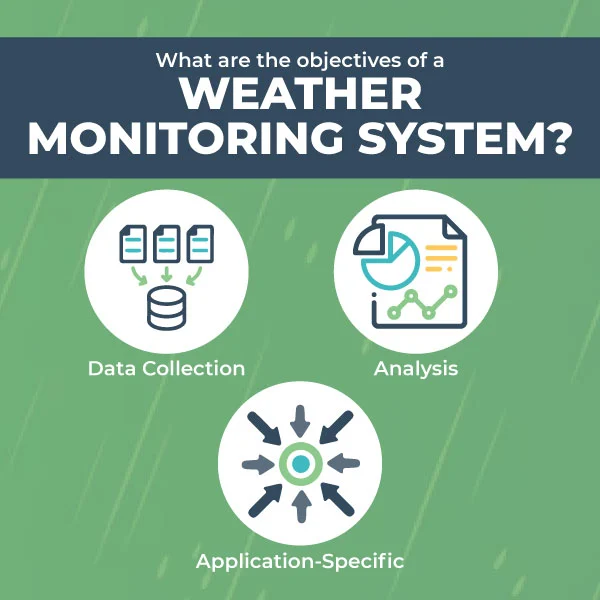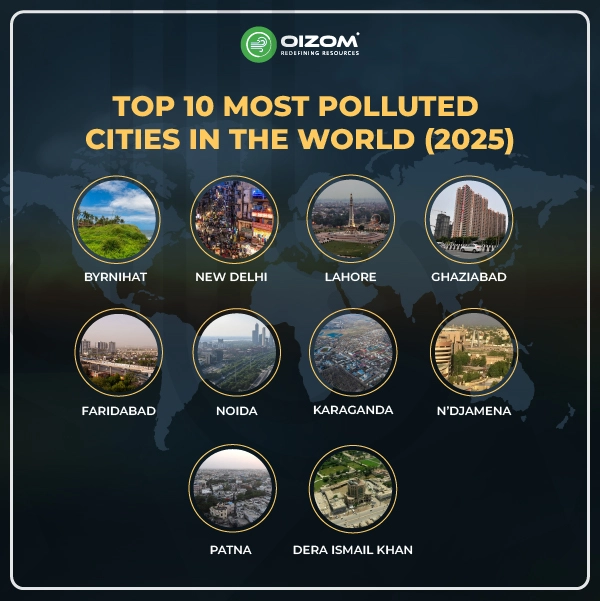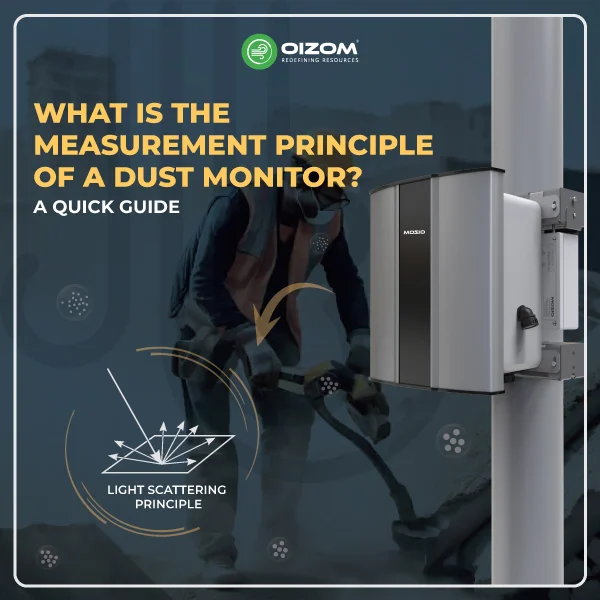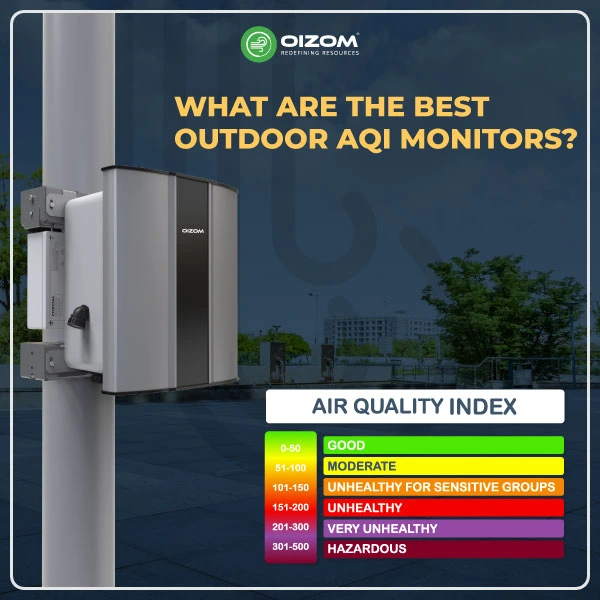Key Takeaways
- Importance of Weather Monitoring: Weather monitoring systems are vital for safety, agriculture, and planning, offering real-time data that impacts daily decisions.
- Data Collection & Analysis: These systems use IoT sensors to collect and analyze atmospheric data, enabling accurate weather predictions and informed decision-making.
- Application in Weather Forecasting: IoT-based systems provide precise, hyper-local forecasts crucial for agriculture, transportation, and emergency management.
- Climate Research: Weather monitoring systems are key in long-term climate studies, helping understand and mitigate climate change effects.
- Disaster Management: Real-time data from these systems aids in early warning and risk management during severe weather events like tornadoes and floods.
- Agriculture & Food Security: Farmers use weather data to make informed decisions about planting, irrigation, and pest control, leading to better crop yields.
- Impact on Transportation: Monitoring weather conditions helps manage the risks of delays and accidents in aviation and road transport.
- Energy Sector Relevance: Weather monitoring supports renewable energy optimization, especially in solar, wind, and hydropower production.
- Environmental Protection: These systems track pollutants, aiding air quality management and environmental conservation efforts.
- Economic & Research Contributions: Weather monitoring supports economic development by providing critical industry data and enhancing scientific research and forecasting models.
What are the Objectives of a Weather Monitoring System?
When we think about the weather, we consider more than just what to wear or whether we need an umbrella, raincoat, or jacket. Right! Weather monitoring systems play a crucial role in our daily lives, especially when it comes to safety, agriculture, and planning. These systems are designed to track and analyze various atmospheric conditions, helping us understand and predict weather patterns with greater accuracy. But what exactly are the objectives of a weather monitoring system?
In this blog, we’ll explore the core goals of these systems, from improving public safety by forecasting severe weather events to aiding in climate research and supporting agricultural planning, whether you’re new to the topic or already familiar with weather systems. We’ll explain how these systems work to provide real-time data that impacts everything from your morning commute to your late-night journey. Whether you’re a meteorologist or just curious about how these systems benefit society, this blog will give you a clear, concise understanding of their importance. Let’s dive in and uncover the key objectives behind weather monitoring systems.
Data Collection and Analysis
Data collection and analysis are critical components of a weather monitoring system, enabling accurate predictions and informed decision-making.
Did you know this? Traditional weather reporting methods are informative but often experience delays in data collection and sharing. In contrast, IoT collects data from sensors in real-time.
A robust weather monitoring system uses a large network of sensors to collect numerous meteorological characteristics. These weather montoring sensors are carefully positioned to collect data from various heights, terrains, and geographical regions. Each meteorological characteristic is usually assigned to a specific sensor, and the data acquired by the sensor indicates changes in the atmospheric environment.
- Temperature Sensor: A sensor that measures the temperature of the atmosphere.
- Humidity sensor: A device that measures humidity and relative humidity in the atmosphere.
- A barometer sensor measures atmospheric pressure.
- Wind speed sensor: a device that detects wind speed.
- Wind direction sensor: a device that detects the direction of the wind.
- Precipitation sensor: a device that measures rainfall.
- Solar radiation sensors monitor the sun’s ability to emit radiation. They are widely used in meteorology, environmental monitoring, and renewable energy applications.
The obtained data is subsequently transmitted to central databases for full analysis. This data is processed by sophisticated algorithms, which discover patterns and trends that allow for more accurate forecasting of meteorological conditions. Weather systems can provide timely forecasts based on machine learning and statistical models, assisting communities in preparing for potential weather incidents.
Sensor calibration and data validation must be performed regularly to ensure accuracy. Integrating data from many sources, such as satellite imaging and historical weather records, also improves the analysis’s reliability. Continuous monitoring and improvement of the data collection process ensure that the system responds to changing environmental conditions.
We’ll explore how weather monitoring can be beneficial across different fields, whether for researchers, professionals, farmers, transportation, or anyone needing weather forecasts.
Application-Specific Objectives
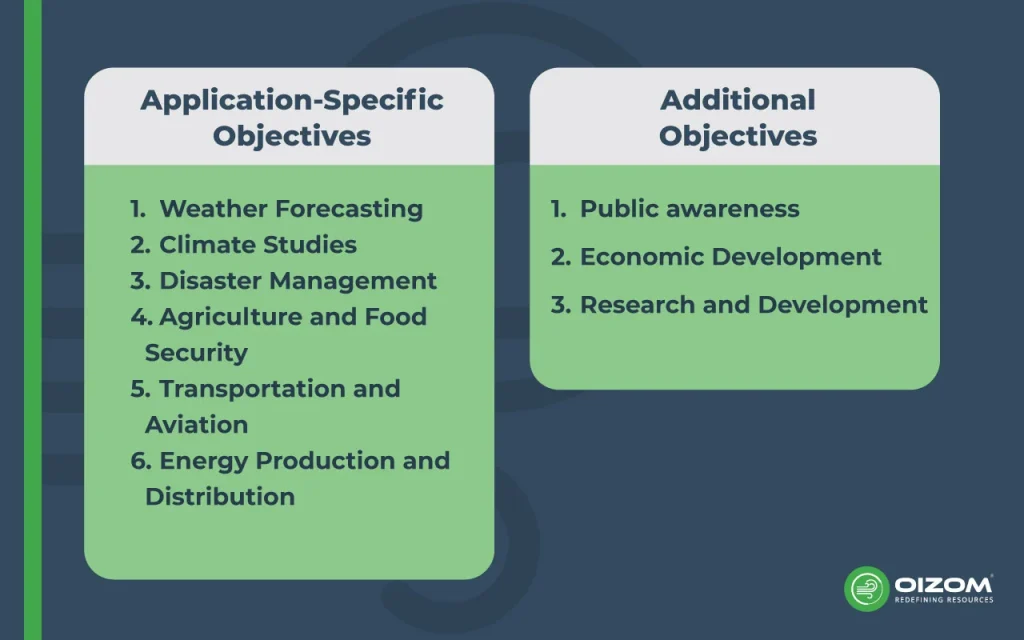
Below, we will discuss application-specific objectives for the weather monitoring systems.
Weather Forecasting
IoT-based weather monitoring systems improve predictions by utilizing real-time data from the attached sensors. These sensors continuously measure weather characteristics such as temperature, humidity, and wind speed, allowing quick and precise predictions. Unlike old approaches, IoT offers exact, hyper-local forecasts, which are critical for agriculture, transportation, and emergency management. This technology improves preparedness and response to weather changes, making forecasting more accurate and timely.
Climate Studies
Weather monitoring systems are essential for climate research because they capture long-term data on temperature, humidity, precipitation, and atmospheric variables. This information is critical for determining trends and patterns in climate change.
Imagine a station in the heat of the Sahara or the cold of the Arctic, continuously providing accurate data unhindered by the environment. That’s why Weathercom promises consistent, reliable, and undeterred meteorological monitoring. Weathercom stands as a beam of innovation and reliability. As an Automatic Weather Station (AWS), Weathercom is not just an instrument but a lifeline for those needing real-time, hyper-local weather parameters.
Advanced sensors and IoT technology improve data collection accuracy and frequency, allowing for a more comprehensive view of environmental changes over time. The insights generated from these systems help researchers, lawmakers, and environmentalists understand climate dynamics, forecast future changes, and develop methods to mitigate the effects of global warming and extreme weather.
Disaster Management
Weather monitoring equipment generates real-time weather data, which can be utilized for early warning and risk management. For example, when severe weather, such as heavy rain, tornadoes, or blizzards, is on the way, the devices can send notifications to help people take appropriate shelter and protection measures.
Agriculture and Food Security
Imagine having a reliable companion in your farming decisions – that is what IoT weather insights are all about. When it comes to planting, irrigation, and pest control, these are vital. IoT weather monitoring systems can provide farmers with information on rainfall, temperature, and soil moisture, allowing them to make better field decisions.
Knowing precise real-time and historical weather patterns for the area helps farmers improve sowing, irrigating, fertilizing, and pest control, resulting in higher yields and better crop quality. Rising temperatures, shifting precipitation patterns, and extreme weather events like droughts, floods, and storms all have the potential to reduce crop production.
Transportation, Aviation and Seaports
Adverse weather conditions such as low visibility, rain, snow, and fog are important causes of air travel delays and disruptions. Thunderstorms and heavy snowfall, for example, can cause runway closures and considerably increase the risk of delays, as seen at large airports like London Heathrow, where severe weather conditions increased delays by up to 25%. Recently, there has been increased turbulence, resulting in some deaths in flight and even substantial damage to aircraft.
Extreme weather phenomena, such as heavy rainfall, snow, and high temperatures, impact road transportation by increasing the likelihood of accidents, infrastructure damage, and travel delays. Heavy rains can cause flooding, disrupting road networks, while snow and ice can make roads dangerous and unusable.
Weather conditions have a considerable impact on public transportation services. Flooding and heat waves can impair rail operation, resulting in delays and cancellations. Heat waves can cause train tracks to break down, resulting in service outages. Similarly, strong weather and flooding can wipe out rail tracks and cause service delays.
Weather influences all aspects of port operations. Ships and ports operate on very tight schedules, and delays due to weather can cost millions of dollars per day. Extreme weather conditions can overturn container stacks, disrupt navigation, destroy cables, and cause accidents, among other hazards to port operations.
As a result, monitoring sea and weather forecasts is critical for preparing for adverse conditions, capitalizing on opportunities, and avoiding accidents and losses. Curious about how real-time weather monitoring can transform port operations?
Check out our case study on how Oizom helped Adani Dighi Port enhance safety and efficiency by monitoring critical weather conditions.
Energy Production and Distribution
Weather monitoring plays a pivotal role in the energy sector, particularly in the realm of renewable energy sources and grid management.
- Solar Power: Solar radiation levels directly impact solar power output. Weather monitoring aids in predicting solar irradiance, allowing for more efficient panel orientation and energy storage.
- Wind Power: Wind turbine efficiency is determined by its speed and direction. Weather data helps to predict wind patterns, optimize turbine installation, and manage energy output.
- Hydropower: Rainfall and river flow levels are critical for producing hydroelectric power, and monitoring these metrics aids in optimizing dam water management and power generation.
- Thermal Power Plants: Weather conditions can affect cooling water availability and demand. Monitoring temperature and humidity helps in optimizing plant operations.
Environmental Protection
Weather monitoring systems are essential tools for environmental protection. They provide crucial data to understand and mitigate environmental challenges. Key Roles of Weather Monitoring in Environmental Protection:
Air Quality Monitoring:
- Detecting and tracking pollutants: Weather stations can measure various pollutants, such as particulate matter, ozone, nitrogen dioxide, and sulfur dioxide.
- Identifying pollution sources: By correlating pollution levels with meteorological conditions, it’s possible to pinpoint pollution sources.
- Developing air quality management plans: Data collected helps create effective strategies to reduce air pollution.
Additional Objectives
The weather monitoring system has additional application objectives, including public awareness, economic development, and research and development.
Public awareness
By making data and results available to the public and monitored by meteorological stations, public awareness of environmental issues can be raised, and environmental protection actions and public participation can be promoted.
Additionally, weather sensors provide crucial data for disease surveillance. Many infectious diseases, including malaria, dengue fever, and Lyme disease, are strongly influenced by weather patterns. Mosquitoes, which transmit diseases like malaria and dengue, grow in warm, humid environments.
Weather sensors can monitor temperature and humidity to help identify areas at high risk of disease outbreaks. This data enables public health professionals to carry out targeted interventions such as mosquito control, public awareness campaigns, and the distribution of preventive measures such as insecticide-treated bed nets.
Economic Development
Weather monitoring systems play an important part in economic development by supplying critical data to numerous sectors. Accurate and reliable weather information can substantially impact decision-making and resource allocation, eventually helping to boost economic growth and resilience.
Let’s discuss a great example of how weather affects the tourism and industries. The tourism and hospitality industry is a weather-sensitive industry, and as a result, the weather has the potential to shape the attractiveness of destinations. Weather tremendously impacts tourism, and real-time weather monitoring can considerably improve the travel experience. Accurate weather forecasts enable tourists to schedule their activities accordingly, making their trip enjoyable and stress-free.
Research and Development
Meteorological research and forecast models rely heavily on weather monitoring data. By gathering vast real-time data, meteorologists can enhance forecast models and more accurately predict future weather conditions.
Meteorological station data are used to conduct environmental science studies. Scientists can utilize these data to investigate climate change, pollution dispersion patterns, ecosystem response, and other topics, giving a scientific foundation for developing environmental laws and initiatives.
Conclusion
Finally, You now know everything about the objective of the weather monitoring system. In today’s culture, the weather monitoring system is essential and extremely valuable. They assist us in anticipating weather changes and taking proper safety precautions by delivering accurate meteorological data. If you’re tired of Mother Nature’s surprises and want to protect your business from weather-related disruptions, consider installing an Oizom IoT-based weather monitoring system. This technology enables real-time data collection, provides accurate data on its cloud platform Envizom, and enhances streamlining business processes.
To ensure you choose the right setup for your needs, our Guide to Weather Monitoring Instruments provides a detailed overview of the tools and technologies involved. Weather monitoring devices will become more exact and smarter as technology advances, bringing greater convenience and assurance in our lives and at work.
FAQs
The primary goal of a weather monitoring system is to accurately track and predict weather conditions to ensure safety, inform decision-making, and support various industries.
Weather monitoring helps farmers optimize planting and harvesting schedules, manage water resources, and protect crops from extreme weather, ultimately improving yield and reducing losses.
Yes, weather monitoring enhances transportation safety by providing real-time data on heavy rainfall, snow, and high temperatures, helping to prevent accidents and delays caused by adverse weather.
Weather monitoring is crucial for the energy sector, aiding in predicting energy demand, optimizing renewable energy production, and protecting infrastructure from weather-related damage.

